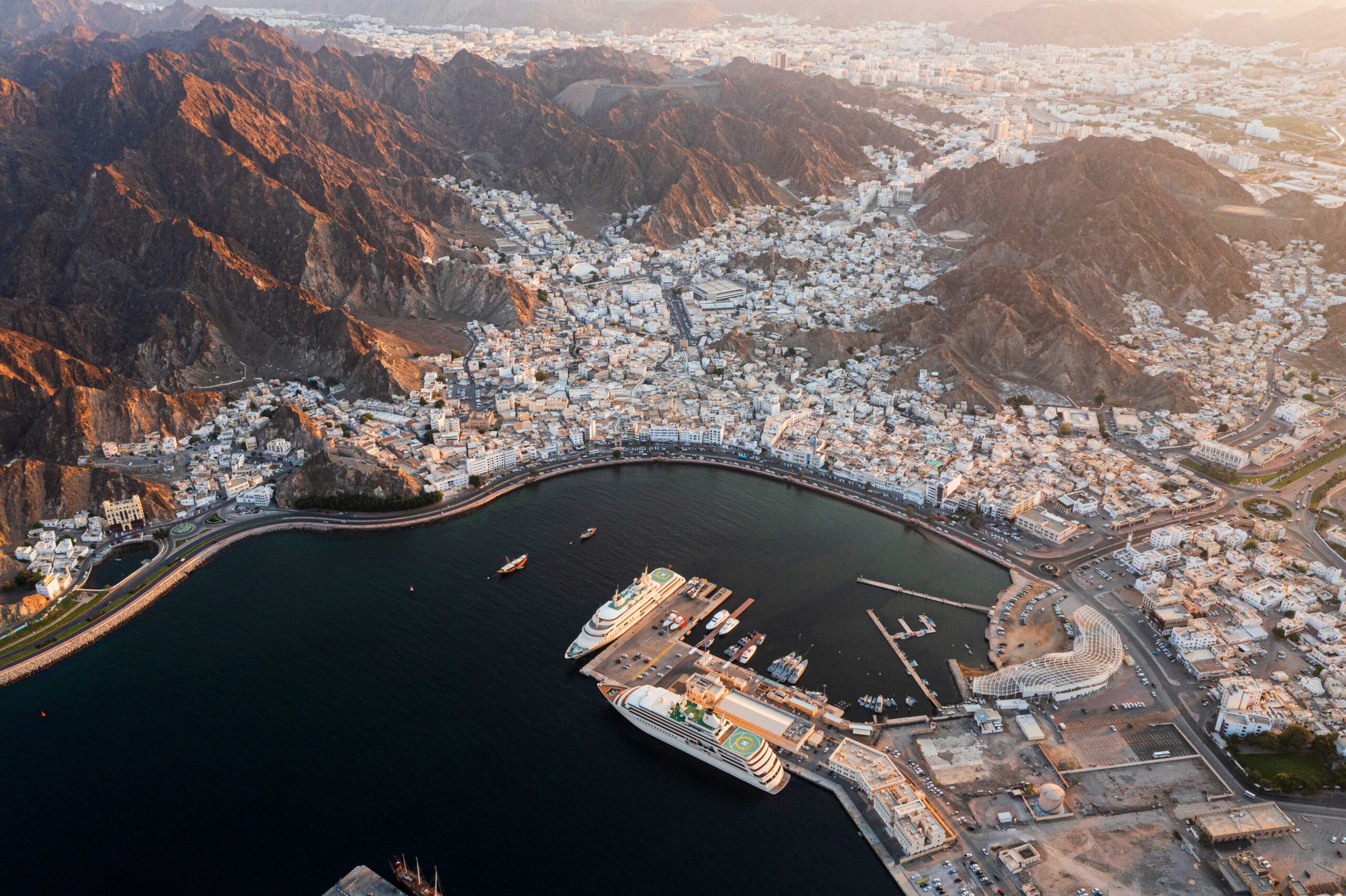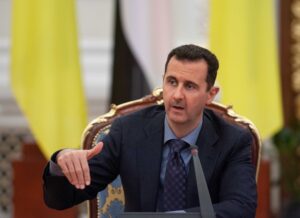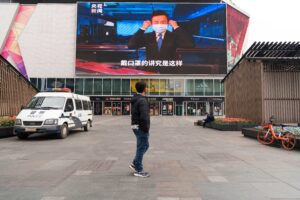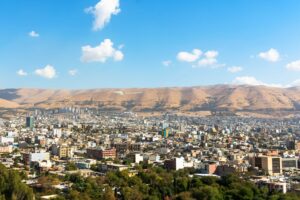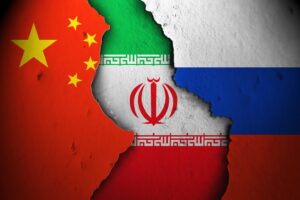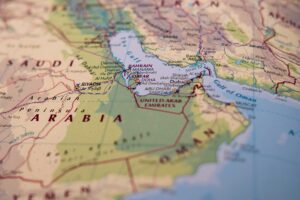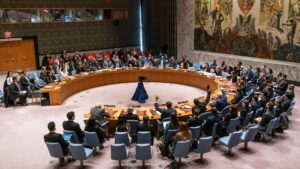Introduction
Oman has become an attractive partner for China since Chinese President Xi Jinping’s 2013 announcement of his ambitious plan to revive the ancient Silk Road and ocean trade routes under the auspices of the Belt and Road Initiative (BRI). However, compared to the Chinese relationship with regional heavyweights such as Iran and Saudi Arabia, China’s axairs with the Sultanate has often been overlooked by scholarship and has featured somewhat as an afterthought, despite the potentially pivotal implications of this relationship.[1] Their omission from studies of the BRI has obscured the extent of China’s interests in Oman and does not fully represent Oman’s strategic importance for China. The Sultanate is well-positioned on the axis of the Arabian Gulf and the Indian Ocean, enabling it to perform as a regional hub between the GCC states, coastal East Africa and Asia, and possesses accessible trade routes and attractive transit times to the globe’s emerging markets.[2] Thus, China’s maintenance of strong relations with Oman is paramount to making the BRI a successful venture, which has subsequently led policy-makers in Beijing to fund numerous bilateral projects including the financing of extensive industrial zones in the ports of Duqm and Sohar.
However, there has been some cause for concern about the potential downfalls Oman could suxer as a result of engaging with the BRI. Many countries such as Malaysia and India have felt great trepidation and suspicion toward China’s claim that the BRI supports international cooperation, promotes common development, and will economically benefit partner countries.[3] Instead, it is suggested that the infrastructure project is intended to export the Chinese model and undermine sovereignty, primarily through setting debt traps for countries who cannot repay the Chinese loans. However, it is not yet fully clear if China is earnestly supporting global economic development or if it is indeed ‘weaponising capital’ at the expense of smaller nations.[4]
Although Oman should proceed with caution in their embrace of the Chinese project, there is room for the Sultanate to leverage the BRI to support its own development. The BRI oxers Oman a plethora of opportunities: the circumstances to project its reach into territories and regions that were once within its sphere of influence during its time as a maritime imperial power, going as far as coastal East Africa and Gwadar in present-day Pakistan[5]; the potential to develop academic partnership programs and curriculum cross-fertilisation, and most importantly; the means to successfully diversify the economy of the Sultanate away from oil and gas. By taking advantage of the BRI’s investment projects, Oman stands to gain much from the transforming Sino-Omani friendship and potentially achieve a win-win outcome.
A historic overview of Sino-Omani relations: from ancient ties to the BRI
Since ancient times the Indian Ocean has been a central hub of maritime trayc and commerce, with China and
Muscat being home to many seafaring merchants who traded through these waters. Under the leadership of the Tang Dynasty, as ‘The Spices Road’ began to materialise, sea-borne trade between China and Arab countries increase considerably. In order to develop overseas trade, the Tang Dynasty established super-intendancies of Merchant Shipping in Guangzhou. This site would become a key location for Arab merchants – including many Omanis – to settle and do business.[6] Instances such as this are testament to China and Oman’s long histories of forging ties both East and West across the oceans.
For all of its notable progress in the last few years, contemporary relations between China and Oman emerged out of an atmosphere of hostility and distrust during the Dhofar Rebellion between 1962 and 1975. During this brief spell of civil unrest against the Sultan led by the Dhofar Liberation Front – a separatist insurgency influenced by Arab nationalism and Marxist-Leninism – China provided moral, financial, and military assistance to the rebels in Oman. China also engaged in training Dhofari agitators in China, and in some instances deployed military advisers to support the uprising.[7] Despite this unpromising bout between the two countries, fortunately for both parties it did not set a precedent: Oman eventually recognised the People’s Republic of China (PRC) in 1978 and established oycial diplomatic ties.
The intensification of the Sino-Omani strategic friendship started in the early 1980s. By this time, China began to view Oman not only in terms of its geographical importance but also through the locus of its abundant oil resources. The need of the Chinese state to secure long-term energy supplies led them to restyle their foreign policy towards the Gulf, and in 1983 Oman became the first Arab nation to export oil to China.[8] Since then, the key axis around which Chinese-Omani relations have revolved has been energy cooperation and oil trade. According to a report by the US Department for Energy, China is Oman’s largest export market for petroleum, receiving 70% of Oman’s crude oil exports in 2017.[9] By December 2018, this percentage has increased to 87.23%, according to a monthly report by Oman’s Ministry of Oil and Gas.[10] Hence, strong commercial bilateralism has been a hallmark characteristic of the Oman-China relationship practically since the conception of both nations, and this has not changed in recent years; indeed, it is precisely economic cooperation between the two countries which is the driver of friendly ties, and since the establishment of diplomatic ties both sides have consistently shown firm support toward each other on core interests.[11]
Come 2013, where at a conference in Kazakhstan President Xi Jinping announced China’s plans for the ‘New Silk Road,’[12] it became clear that China’s relationship with Oman was set for an intensification of economic and cultural ties. With this now trademark pillar of Chinese foreign policy aiming at placing Beijing at the epicentre of global trade, Chinese policy-makers immediately set their sights on Muscat, seeing the great potential in the Sultanate for mutual development and cooperation.
Chinese State Councillor Wang Yong – on an oycial visit to Muscat in May 2016 – stated that China considers Oman a key partner in materialising the BRI, and believed that the China-Oman relationship should assume a new significance.[13] In the eyes of the Chinese state, Oman oxers an important strategic location for extending the reach of the BRI due to its connectivity to markets in East Africa and the GCC. Beijing also values the Sultanate’s climate of stability and its peaceful sectarian coexistence – somewhat unique to the Gulf and wider Middle East – which makes it a reliable and therefore indispensable regional player in expanding China’s maritime presence in the Arabian Sea and Indian Ocean.[14]
As of yet, the main development in Oman as a result of increased Chinese interest and BRI integration has been the China-Oman Industrial Port in Duqm, which is playing a critical role in boosting Chinese-Omani cooperation.[15]
Forming part of the Al Duqm Special Economic Zone, the largest of its kind in the MENA region, the project so far has an estimated investment cost of 67 billion yuan. Although some critics have posited that Chinese investment in Duqm is a purely solipsistic venture aimed at developing China’s export markets in the Gulf and wider region and to strengthen Chinese power abroad, these interpretations fail to see the benefits of such an enterprise. Indeed, the park is set to increase manufacturing production in Oman considerably and promote the overall economic development and diversification of the Sultanate: bringing robustness and hope to an otherwise sparse desert area with a small
population and a relatively low level of development.[16] The explosion of activity in Duqm since 2016 emphasises how the BRI provides the Omani government with an unparalleled opportunity to attract direct foreign investment at a time when the future of its economy is under scrutiny. No doubt, China’s investment in Duqm is a strategic one, with the intention to propel the Chinese economy forward at a dramatic pace through forging strong commercial ties with its neighbours; nonetheless, this should not be taken to mean that Chinese interests undermine those of Oman. Rather, there is great potential for the Sultanate to capitalise on Chinese interest in supporting the development of the country, and the newfound partnership under the auspices of the BRI can aid in achieving economic diversification more promptly.
Omani potential for leveraging the BRI
Some academics have warned that the lack of regulation surrounding the BRI puts countries like Oman, who hope to harness the BRI’s potential benefits, at risk of becoming ensnared in debt traps. Brussels-based scholar Ramon Pacheco Pardo has suggested that the BRI’s source of financing is underscored by China’s use of economic inducements to gain influence in target countries, and that the initiative is in reality a subtle hegemonic ploy.[17]
Countries such as Djibouti and Sri Lanka provide a degree of credibility to this claim: in both countries, Chinese capital loans have supported infrastructure projects under the aegis of the BRI. Subsequently, unable to pay back their debts, they have been forced into debt-for-equity arrangements, leading them to hand over large stakes in key ports and military bases.[18] As a result of these episodes, a number of other countries once positive about the BRI have since changed their tone; many are now fearful that if they allow the Chinese project to take exect in their respective countries they will not only have to sign away large assets over to the Chinese, but also become completely dependent on Chinese capital, Chinese labour, and Chinese products.
However, while these issues of uncertainty should not be overlooked, it should be realised that like any new business realm (and certainly one as broad as this), there is naturally no lack of risks and pitfalls: the BRI is ‘not paved with gold’[19]. It is a given that Oman should not look into the mouth of the lion too far and see Chinese support as a remedy for all of the country’s unanswered issues. Nonetheless, China’s transcontinental BRI economic connectivity oxers outstanding opportunities for the Sultanate to leverage to achieve its longstanding development goals, and due to Oman’s unique diplomatic neutrality and geostrategic position, the risk of Chinese entrenchment can always be balanced through the maintenance of strong ties with other powerful countries with a stake in Oman’s best interests. While welcoming Chinese capital, Muscat should have no reservations about attempting to secure further leverage from the USA or India if China’s imprint becomes too deep. Oman is in a more favourable position than most nations in their dealings with the Chinese superpower.
Moreover, with Beijing and New Delhi continuing their competition for geopolitical supremacy across the Indian Ocean, Oman can benefit from its strategic position at the crossroads of Indian and Chinese trans-regional trade corridors to become a crucial shareholder as that rivalry evolves in the coming years.[20] Like their Chinese counterparts, India is committed to taking advantage of Omani trade networks to achieve access to more markets in East Africa and the GCC[21]: India has a long history of cultural, diplomatic, and economic ties with the Sultanate, which is a relationship Oman can use to its advantage towards the end of cementing its place as an attractive maritime trade hub. Due to the country’s proximity to the Gulf of Oman, Strait of Hormuz, Arabian Gulf, Arabian Sea and Indian Ocean, it has the potential to grant access to some of the most attractive energy corridors globally, thus making its presence in the global energy supply chain more pronounced.
Perhaps most importantly, by cooperating with China by supporting BRI investment and projects, Oman can achieve economic diversification at a much faster pace than it would otherwise be able to achieve.
For the Sultanate, a narrow focus on oil and gas no longer works or is a viable option for long-term economic development. The country’s oil reserves remain one of the lowest among neighboring Arab states, and sustained focus on the oil and gas industries has hampered economic diversification by constraining the amount of resources available for research and development. With Vision 2020 and the more recent Vision 2040 emphasising human capital development, knowledge-based industries, information technology infrastructure, private sector-supported initiatives, healthcare, foreign direct investment, and e-commerce, there is much room for Oman to harness the financial backing of China to achieve the robust logistics and infrastructure links necessary to promote this downstream diversification.[22] Hence, partnership with China presents itself as a win-win model because the potential for investment and trade dovetails perfectly with the innovative plans of Oman’s 2020/2040 Visions for economic restructuring.
Furthering this point, the BRI also oxers immense opportunity for Oman to expand its tourism industries, including Arabic theme parks, cultural tourism destinations, and global merchandising. Over the last few years Oman has adopted a bullish growth outlook in terms of its tourism sector, and it is expected by researchers and analysts alike that there should be an expected positive growth momentum over the next decade in this field.[23] With the Sultanate expecting to see a large increase in tourists visiting the country due to an already impressive amount of investment, it is clear that further development in tourism industries using Chinese capital would not go to waste.[24] Harnessing the BRI thus is likely to open avenues for joint projects in heritage tourism, food and beverage services, hotels, and wildlife activities, which in turn oxers potential for opening new doors for unemployed youth and local communities who wish to be employed in areas outside of the traditional industries.
The BRI’s involvement in Oman should also not solely be seen as economically transformative for the Sultanate: it could also be harnessed to improve academic networks between Oman and East Asia, in turn making Oman a truly global country. Already, Beijing is sponsoring hundreds of Omani students to train, sight-see, and study in China, with the view that they will return to newly formed special economic zones like Duqm to work.[25] Working with the Omani Ministry for Higher Education, academic partnership projects with the BRI will provide more opportunities for Omani universities and schools to cultivate education and internship networks through joint research and development, language training, curriculum cross-fertilisation, and exchange programs between the two countries.[26]
Conclusion
With the advent of the BRI – which has become the most distinctive feature of contemporary Sino-Omani cooperation – the confluence of shared interests between Beijing and Muscat in terms of economic connectivity and trade indicates that the two nations’ relationship will continue to flourish over the coming years. While cases like Djibouti and Sri Lanka produce a negative outlook in terms of the potential drawbacks which could come from jumping on the BRI bandwagon, Oman’s unique geographic position and diplomatic neutrality can be used as a bulwark to the possibility of debt traps formed by the BRI. Despite these apparent risks and uncertainties, the transcontinental Chinese infrastructure project oxers remarkable opportunities for Oman to achieve its development goals in the realms of economic diversification, education, international trade, and employment creation. Examples such as Duqm oxer clear and systemic evidence for these benefits the BRI has to oxer. By seizing full advantage of Chinese investment, Oman could leapfrog itself to the next stage of its development whilst strengthening its relationship with a growing global power, producing a win-win outcome for the Sultanate.
[1] Zambelis, C. (2015). China and the Quiet Kingdom: An Assessment of China-Oman Relations. China Brief 15:22. Retrieved from https://jamestown.org/program/china-and-the-quiet-kingdom-an-assessment-of-china-oman-relations/
[2] Cafiero, G., Wagner, D. (2017 May 24). What the Gulf states think of ‘one belt, one road’. The Diplomat. Retrieved from https://thediplomat.com/2017/05/what-the-gulf-states-think-of-one-belt-one-road/
[3] August 28, 2018. Xi pledges to bring benefits to people through Belt and Road Initiative. Xinhua. Retrieved from http://english.gov.cn/news/top_news/2018/08/28/content_281476279035556.htm
[4] Chin, S. (2018). BRI debt trap: An unintended consequence? The ASEAN Post. Retrieved from https://theaseanpost.com/article/bri-debt-trap-unintended-consequence
[5] Zambelis, C. (2015). China and the Quiet Kingdom: An Assessment of China-Oman Relations. China Brief 15:22.
[6] Qian, X., & Fulton, J. (2017) China-Gulf Economic Relationship under the “Belt and Road” Initiative, Asian Journal of Middle Eastern and Islamic Studies, 11:3.
[7] Zambelis, C. (2015). China and the Quiet Kingdom: An Assessment of China-Oman Relations. China Brief 15:22.
[8] Rakhmat, M.Z. (2014). ‘Exploring the China and Oman relationship.’ The Diplomat. Retrieved from https://thediplomat.com/2014/05/exploring-the-china-and-oman-relationship/
[9] EIA Beta (2019). Oman Executive Summary. Country Analysis Briefs. Retrieved from https://www.eia.gov/beta/international/analysis.php?iso=OMN
[10] China Daily (2019). China remains largest buyer of Oman’s crude in December: report. Retrieved from http://www.chinadaily.com.cn/a/201901/16/WS5c3ec328a3106c65c34e4cc7.html
[11] Cafiero, G. (2017 October 17). Why China’s investment in Oman matters. The New Arab. Retrieved from https://www.alaraby.co.uk/english/comment/2017/10/17/why-chinas-investment-in-oman-matters
[12] Speech given by President Xi Jinping on 7 September 2013 at Kazakhstan’s Nazerbayev University. Transcript retrieved from https://www.fmprc.gov.cn/mfa_eng/topics_665678/xjpfwzysiesgjtfhshzzfh_665686/t1076334.shtml
[13] Bhaya, A. (2018). Analysis: Could China-funded Omani port go against Beijing’s interests? CGTN. Retrieved from https://news.cgtn.com/news/336b7a4d35677a6333566d54/share_p.html
[14] Chaziza, M. (2019). The Significant Role of Oman in China’s Maritime Silk Road Initiative. Contemporary Review of the Middle East, 6:1.
[15] Xi, L., & Yuanyong, Y. (2018). Spotlight: China, Oman establish industrial park to boost bilateral cooperation. XinhuaNet. Retrieved from http://www.xinhuanet.com/english/2018-12/19/c_137683272.htm
[16] McGregor, G. (2018). The Remote Omani Fishing Village of Duqm is ‘Rising From the Desert’ as China Strategically Invests. Albawaba News. Retrieved from https://www.albawaba.com/news/remote-omani-fishing-village-duqm-rising-desert-china-strategically-invests-1203064
[17] The View From Asia (2018). China’s Belt and Road Initiative: Debt trap or hope? The Strait Times. Retrieved from https://www.straitstimes.com/asia/east-asia/chinas-belt-and-road-initiative-debt-trap-or-hope
[18] Cheng, A. (2018). Will Djibouti become latest country to fall into China’s debt trap? Foreign Policy. Retrieved from https://foreignpolicy.com/2018/07/31/will-djibouti-become-latest-country-to-fall-into-chinas-debt-trap/
[19] Leung, A. (2016). How Oman can leverage China’s OBOR to achieve Diversification – Gaining more with Less. Andrew Leung International Consultants Ltd. p.7 Retrieved from https://www.andrewleunginternationalconsultants.com/files/paper—how-oman-can-leverage-china.pdf
[20] Diwakar, A. (2017 December 19). Oman’s coastline is the next stop on China’s Belt Road. Emerge85. Retrieved from https://emerge85.io/articles/omans-coastline-is-the-next-stop-on-chinas-belt-and-road/
[21] Lal, N. (2018 February 21). India China jockey for influence in Oman. Asia Sentinel. Retrieved from https://www.asiasentinel.com/politics/india-china-jockey-influence-oman/
[22] Han, Z., Chen, X. (2018). Historical exchanges and future cooperation between China and Oman under the ‘Belt & Road’ Initiative. International Relations and Diplomacy, 6(1), 1–15.
[23] Oman Tourism Report, Fitch Solutions (2018).
[24] Times of Oman (2018). Oman tourism sector growth intact, reveals new data. Retrieved from https://timesofoman.com/article/138504
[25] Xinhuanet (2018). Spotlight: China, Oman establish industrial park to boost bilateral cooperation. Retrieved from http://www.xinhuanet.com/english/2018-12/19/c_137683272.htm
[26] Leung, A. (2016). How Oman can leverage China’s OBOR to achieve Diversification – Gaining more with Less. Andrew Leung International Consultants Ltd.

